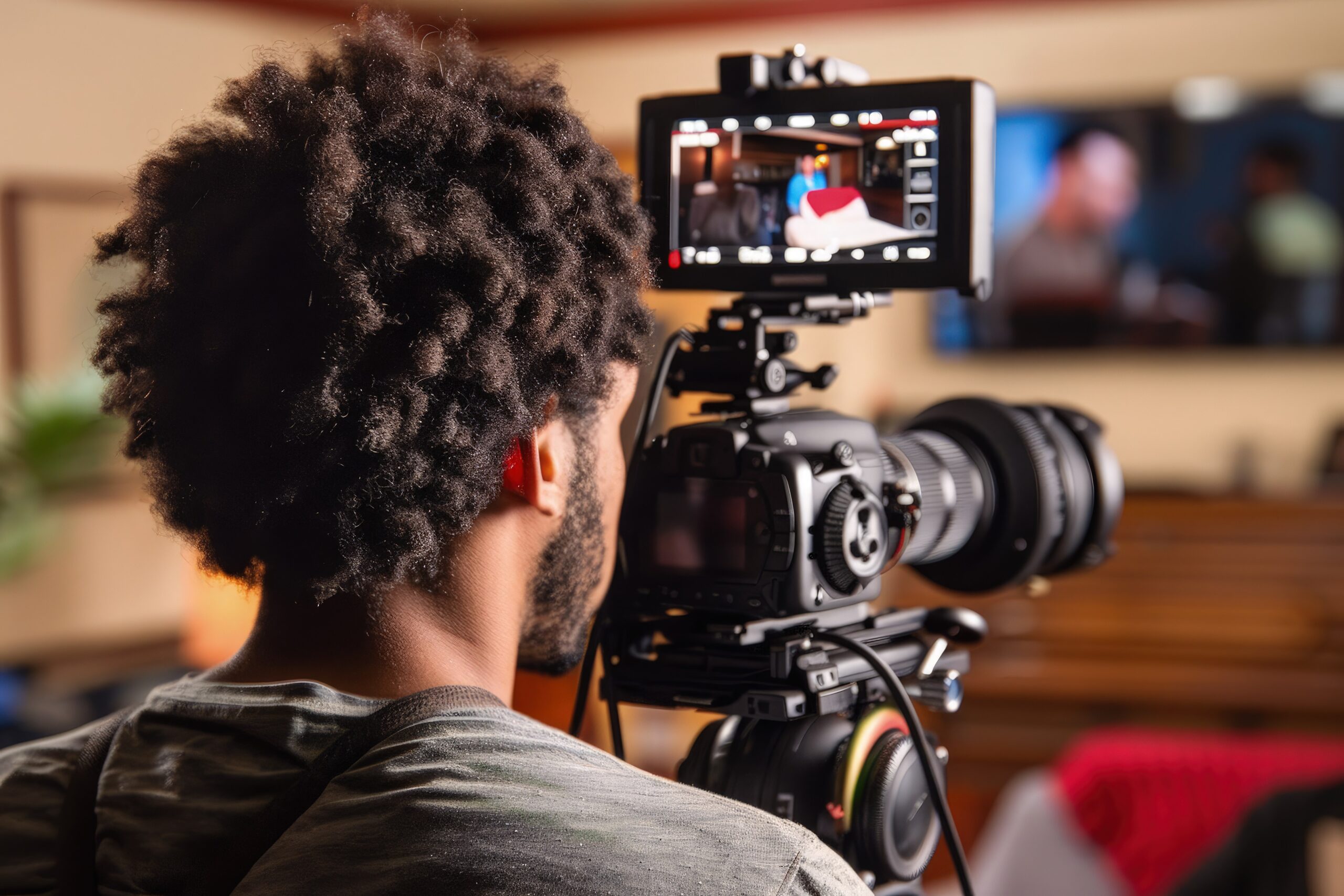In the world of video content creation, capturing and maintaining your audience’s attention is crucial.
One powerful way to achieve this is by crafting compelling video intros and outros that seamlessly integrate with your storytelling.
Video intros and outros serve as the bookends of your content, setting the tone and leaving a lasting impression on your viewers.
In this article, we’ll explore the art of using video intros and outros to enhance your storytelling, engage your audience, and elevate your brand.
We’ll delve into the key elements that make an effective intro and outro, provide practical tips for creating them, and showcase examples of successful implementation.
Whether you’re a seasoned content creator or just starting, mastering the use of video intros and outros can take your storytelling to new heights.
So, let’s dive in and discover how you can harness the power of these essential video components to captivate your audience and leave a lasting impact.
We strongly recommend that you check out our guide on how to take advantage of AI in today’s passive income economy.
Table of Contents
The Power of First Impressions: Crafting Engaging Video Intros
Your video intro is the first point of contact between your content and your audience.
It’s a crucial moment that can make or break their decision to continue watching.
A well-crafted video intro has the power to grab attention, set the tone, and establish a connection with your viewers.
Here are some key elements to consider when creating an engaging video intro:
- Branding: Incorporate your brand elements, such as your logo, color scheme, and typography, into your video intro.
This helps establish brand recognition and consistency across your content.
- Hook: Start your video intro with a strong hook that captures your audience’s interest.
This can be a compelling question, a bold statement, or a visually striking sequence.
- Tone: Set the appropriate tone for your video intro based on your content and target audience.
Whether it’s energetic, informative, or emotional, ensure that your intro aligns with the overall mood of your video.
- Duration: Keep your video intro concise and to the point.
Aim for a duration of 5-15 seconds to avoid losing your audience’s attention.
- Music and Sound Effects: Choose background music and sound effects that complement your intro and enhance the viewing experience.
Ensure that the audio elements align with your brand and the tone of your content.
By carefully crafting your video intro, you set the stage for your storytelling and create a strong first impression that encourages viewers to stick around and engage with your content.
Examples of Effective Video Intros
To better understand the impact of well-executed video intros, let’s look at a few examples from popular content creators:
- Casey Neistat: Casey’s video intros often feature a dynamic montage of clips from his daily vlogs, accompanied by upbeat music and his signature “Hey, what’s up guys?” greeting.
This intro style immediately immerses viewers into his world and sets the tone for his energetic storytelling.
- Marques Brownlee (MKBHD): Marques’ tech review videos begin with a sleek and minimalist intro featuring his iconic logo and a subtle animation.
The simplicity and consistency of his intro reinforce his brand identity and create a sense of professionalism.
- Vox: Vox’s video intros often incorporate bold typography, colorful graphics, and a distinct sound effect that aligns with their brand.
These intros quickly capture attention and establish Vox’s signature style of informative and visually engaging content.
By studying successful examples and applying the key elements mentioned earlier, you can create video intros that effectively set the stage for your storytelling and leave a lasting impression on your audience.
The Art of Closure: Crafting Memorable Video Outros
Just as important as your video intro, your outro plays a crucial role in leaving a lasting impact on your viewers.
A well-crafted video outro serves multiple purposes:
- Call-to-Action (CTA): Use your outro to include a clear and compelling call-to-action, encouraging viewers to take a specific action, such as subscribing to your channel, leaving a comment, or visiting your website.
- Branding: Reinforce your brand identity by prominently displaying your logo, social media handles, and website URL in your video outro.
This helps viewers remember and connect with your brand beyond the video itself.
- Consistency: Maintain a consistent visual style and tone throughout your video outros to create a cohesive viewing experience across your content.
- Next Steps: Provide viewers with a sense of direction by suggesting related videos, playlists, or resources that they can explore next.
This helps retain viewer engagement and encourages them to continue consuming your content.
- Gratitude: Express your appreciation for your viewers’ time and support in your video outro.
A sincere thank you can go a long way in building a loyal and engaged audience.
When crafting your video outro, consider the following tips:
- Keep it concise, typically lasting between 5-15 seconds.
- Use visually appealing graphics, animations, and typography that align with your brand.
- Include a clear and actionable CTA that encourages viewer engagement.
- Provide value by suggesting related content or resources.
- Express gratitude and appreciation for your viewers’ support.
By implementing these elements, your video outros can effectively wrap up your storytelling, reinforce your brand, and leave a positive lasting impression on your audience.
Examples of Memorable Video Outros
Let’s explore a few examples of content creators who have mastered the art of crafting memorable video outros:
- Peter McKinnon: Peter’s video outros often feature a combination of stunning cinematography, inspirational music, and a clear CTA to subscribe to his channel.
He also includes a brief preview of upcoming videos, enticing viewers to stay tuned for more content.
- TED: TED’s video outros consistently display their iconic logo, along with links to related talks and playlists.
They also include a subtle CTA to subscribe to their channel and visit their website for more information.
- Marie Forleo: Marie’s video outros are infused with her signature style and personality.
She often includes a brief recap of the video’s key takeaways, a CTA to subscribe and leave a comment, and a playful sign-off that reinforces her brand’s tone.
By studying these examples and incorporating the key elements of effective video outros, you can create memorable conclusions to your videos that leave a lasting impact on your audience and encourage further engagement with your content.
Conclusion
In the ever-evolving landscape of video content creation, mastering the art of using video intros and outros is essential for enhancing your storytelling and engaging your audience.
By crafting compelling intros that grab attention and establish your brand, you set the stage for a captivating viewing experience.
Similarly, by designing memorable outros that reinforce your message, provide value, and encourage action, you leave a lasting impression on your viewers.
Throughout this article, we’ve explored the key elements and best practices for creating effective video intros and outros.
From incorporating branding elements and strong hooks to including clear calls-to-action and expressing gratitude, each component plays a crucial role in elevating your content.
By implementing these strategies and studying successful examples, you can harness the power of video intros and outros to enhance your storytelling, build a loyal audience, and establish a strong brand identity.
Remember, the art of crafting compelling video intros and outros is an ongoing process.
Continuously refine your approach, experiment with new ideas, and adapt to the evolving preferences of your audience.
Stay attuned to the latest trends and best practices in video content creation, and don’t be afraid to inject your unique style and personality into your intros and outros.
In a world where attention spans are short and competition is fierce, mastering the use of video intros and outros can be a game-changer for your content.
By bookending your videos with engaging and memorable elements, you’ll create a viewing experience that captivates, inspires, and leaves a lasting impact on your audience.
So, embrace the power of video intros and outros, and watch as your storytelling soars to new heights.
FAQ
What are video intros and Outros?
Video intros and outros are short segments that appear at the beginning and end of a video, respectively. They serve several purposes:
- Intro: A video intro is a brief introduction that sets the tone, captures the viewer’s attention, and provides context for the main content of the video.
- Outro: A video outro is a closing segment that concludes the video, summarizes the main points, and often includes calls-to-action (CTAs) or additional resources for the viewer.
Intros and outros help create a consistent brand identity, make videos more professional, and engage the audience.
How do you make an intro and outro for a video?
To create an intro and outro for your video, follow these steps:
- Plan your content: Decide on the key elements you want to include in your intro and outro, such as your logo, tagline, music, and any necessary information or CTAs.
- Choose a style: Select a visual style that aligns with your brand identity and the tone of your video. This may include specific colors, fonts, and graphics.
- Create the graphics: Design the visual elements for your intro and outro using video editing software or online tools. You can use templates or create custom graphics from scratch.
- Select music: Choose background music that complements the mood and style of your video. Ensure you have the necessary rights or licenses to use the music.
- Add text and animations: Incorporate any necessary text, such as your channel name, video title, or CTAs, and add animations to make the intro and outro more engaging.
- Integrate into your video: Import your intro and outro segments into your video editing software and place them at the beginning and end of your main content.
- Review and refine: Watch your video with the intro and outro to ensure a seamless flow and make any necessary adjustments.
What means video outro?
A video outro is the closing segment of a video that appears after the main content. It typically includes elements such as:
- Summary of key points
- Calls-to-action (CTAs), such as subscribing to a channel, leaving a comment, or visiting a website
- Links to related videos or playlists
- Social media handles or website information
- Credits for music, graphics, or contributors
- Branding elements, like a logo or tagline
The purpose of a video outro is to provide closure, reinforce the main message, and encourage viewers to engage further with the content creator or take a desired action.
What is video intro?
A video intro is a short segment that appears at the beginning of a video, prior to the main content. The purpose of a video intro is to:
- Capture the viewer’s attention and set the tone for the video
- Introduce the content creator, brand, or channel
- Provide context or a brief overview of the video’s topic
- Establish a consistent brand identity across videos
Common elements of a video intro include:
- Logo or channel name
- Tagline or mission statement
- Engaging visuals or animations
- Background music that sets the mood
- Brief text or voiceover introducing the video’s topic
A well-crafted video intro can help create a professional and memorable first impression, encouraging viewers to stay engaged with the content that follows.

We strongly recommend that you check out our guide on how to take advantage of AI in today’s passive income economy.




